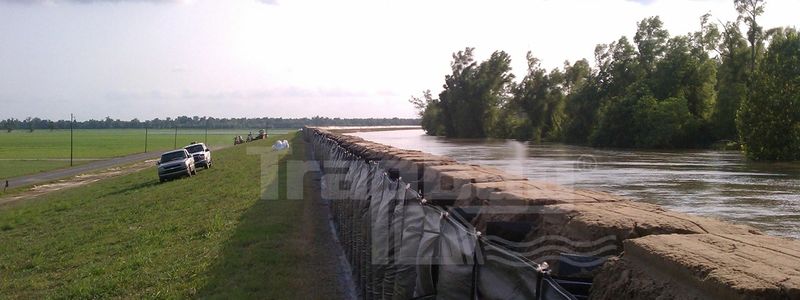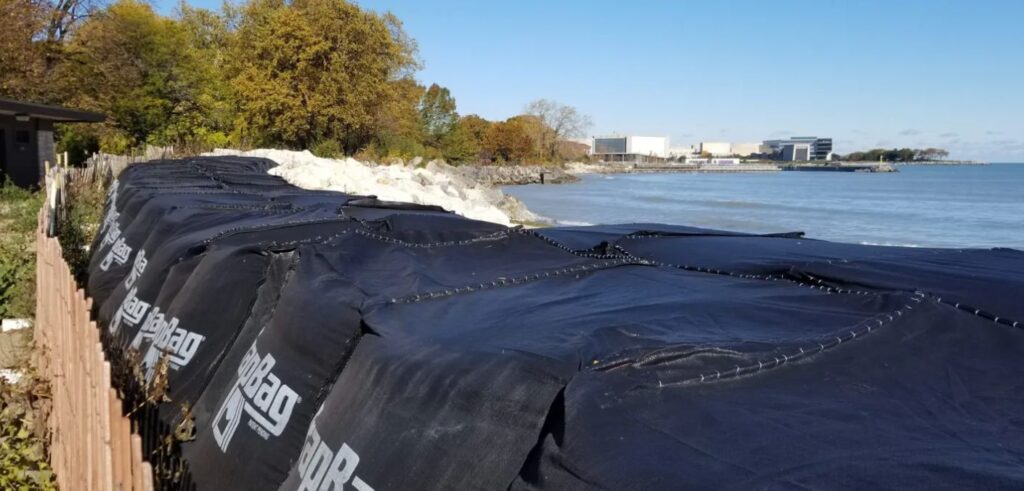Coastal Protection Capabilities with TrapBag®
TrapBag® is an interconnected barrier system engineered to withstand intense wave impact and either repel or redirect water. Each cell is linked to its neighboring units, creating a reinforced structure that absorbs and disperses the force of incoming waves.
- Constructed from durable geotextile material
- Withstands thousands of pounds of wave energy and impact
- Minimizes the effects of wave action and coastal erosion on infrastructure and natural landscapes
How to Deploy TrapBag for Coastal Management
A team of three people can set up TrapBag barriers for coastal flood protection in just a few simple steps:
-
Open the packaging: TrapBag® barriers arrive folded accordion-style in 50-foot bundles, neatly stacked on a pallet for efficient handling and deployment.
-
Place the barrier: Set the barrier against vulnerable coastal areas, beaches, wetlands, or highways to prevent beach erosion, contamination, or shoreline flood damage.
-
Fill the cells: With a skid steer or excavator, you can fill your TrapBag barrier with sand, washed gravel, or concrete in minutes. After you’ve filled the first barrier, you can also stack them or chain them with other TrapBag barriers to make a taller or longer structure as needed.
Industries Using TrapBag
Organizations and agencies worldwide like yours rely on TrapBag to protect coastal infrastructure and natural areas from shoreline erosion and flooding. Some of the industries that use these barriers include:
Coastal engineering
TrapBag helps coastal engineers protect and reinforce shoreline infrastructure like highways, revetments, bulkheads, and breakwaters from the effects of coastal erosion, flooding, and storm surges.
Learn More »Environmental services
Protection agencies use TrapBag to protect sensitive habitats and environments from coastal flood damage and erosion that can lead to species loss and affect entire ecosystems.
Learn More »Emergency management
Public and private organizations use TrapBag barriers to protect residential areas and infrastructure near coastlines, such as highways, electrical substations, or water treatment plants.
Learn More »Projects
Compare Coastal Management Barriers
Not all coastal flood protection structures have the same purpose, nor are they all equally appropriate for every situation.
Seawalls provide essential shoreline flood protection by putting a physical barrier between the ocean and vulnerable coastlines. However, they can also be quite expensive to install and cause damage to shorelines in adjacent areas, so they’re rarely ideal for long-term use.
You can use TrapBag as a temporary seawall for coastal protection while minimizing disruptions to the water’s natural currents and distribution of sand or silt.
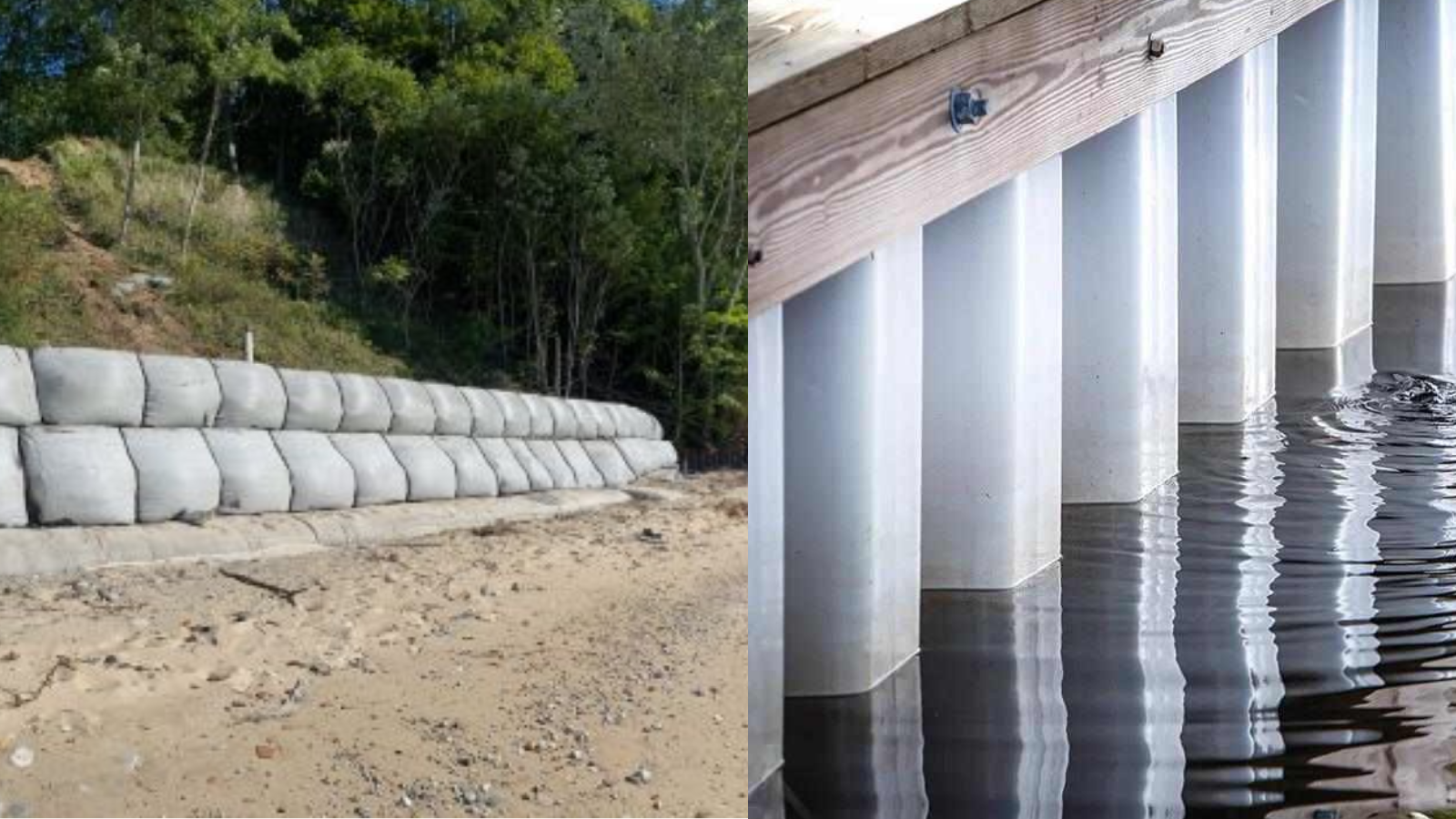
Habitat restoration with native plants is the ideal long-term solution for coastal protection and restoration because it maximizes coastal flood protection while minimizing disruptions. However, it’s a long-term process that can take years to properly implement. TrapBag can temporarily protect areas undergoing restoration so the environment can continue to replenish itself uninterrupted.
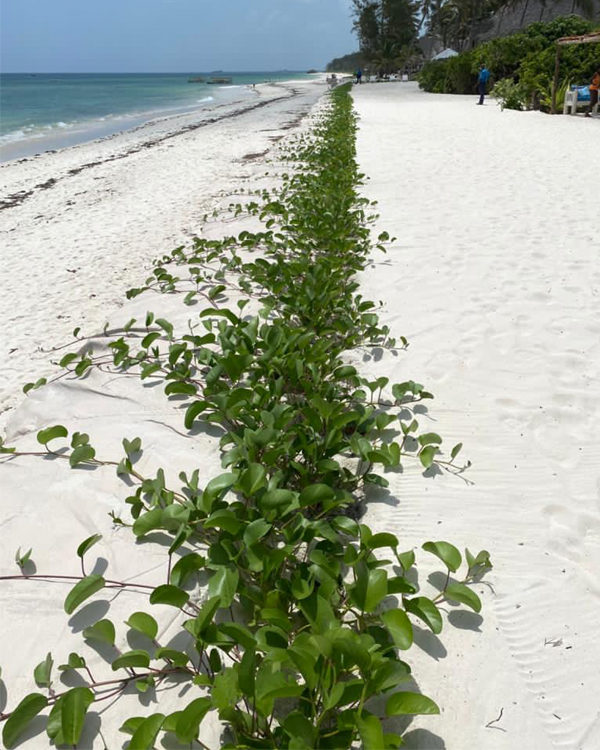
Sand dunes are a coastal area’s first line of protection. In coastal areas with beaches or dunes, stabilizing dune cores can prevent them from eroding or blowing away.
TrapBag barriers are ideal for these coastal engineering projects because they anchor the dune to the beach from within. This allows the dunes to potentially restore themselves and reduce their deterioration—in turn allowing for other protection efforts like planting native vegetation.
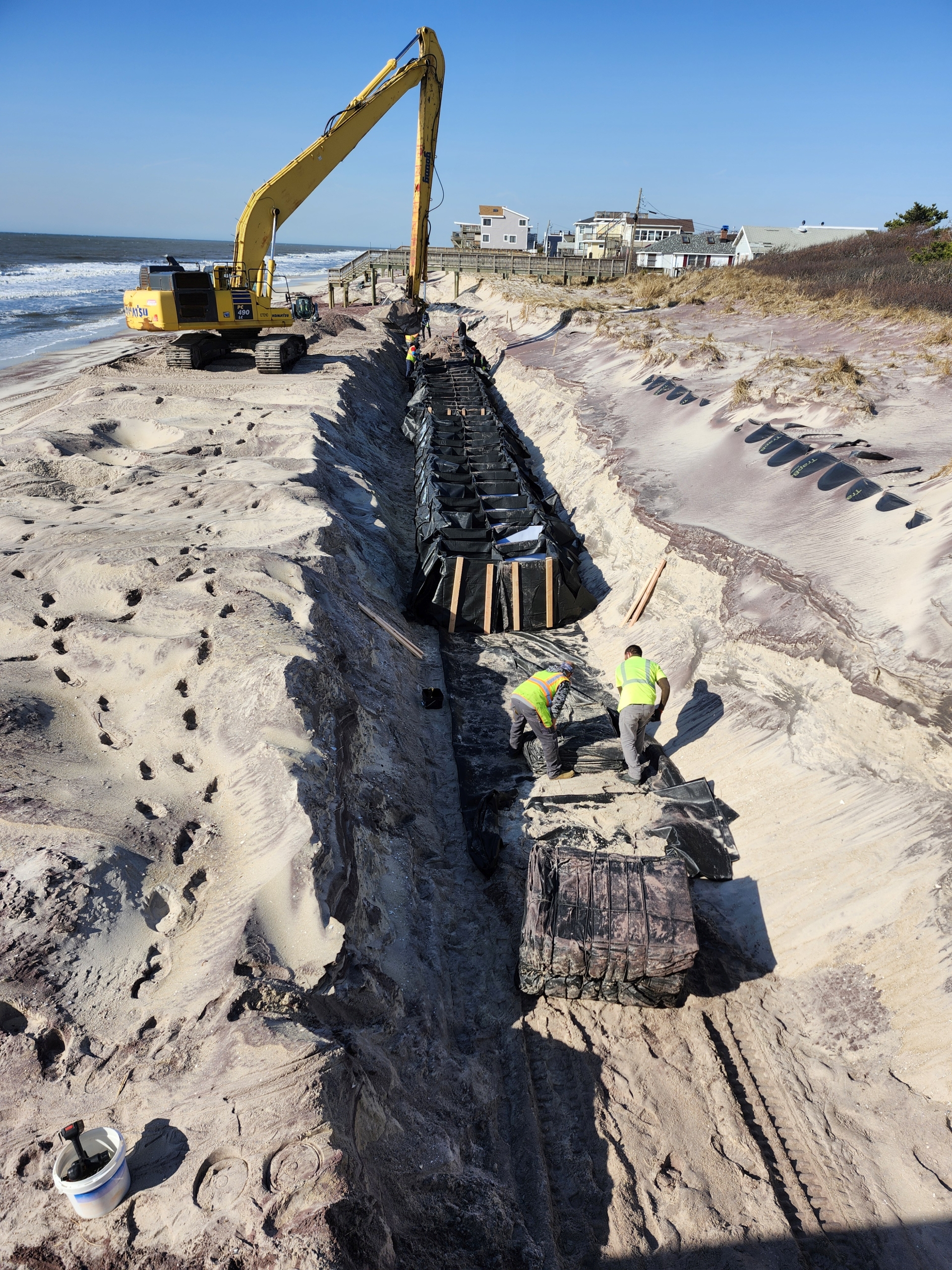
Why Choose TrapBag?
TrapBag and its team of flood protection experts are here to help you protect some of the most vulnerable coastal areas and structures. One 100-foot barrier replaces roughly 8,000 sandbags.
Since they have a pentagonal design with one sloped side and one vertical side, these barriers have more structural integrity than traditional sandbags and are less likely to give way than other barriers.
Led by our founder, Everett “Buzz” Waid, our staff is here to help you protect the coasts in your community. You can connect with us for help 24/7 across multiple countries and continents to address your coastal protection needs.

